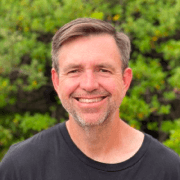Feedback driven growth: A process for sustainable growth
Published 20th March, 2018 by Stuart Hall Everyone wants a silver bullet for growth. We all look for that amazing “growth hack” that will instantly drop millions of new users into our products.
Everyone wants a silver bullet for growth. We all look for that amazing “growth hack” that will instantly drop millions of new users into our products. In this overview we will cover:
- I can't get any users, what should I do?
- What is Feedback Driven Growth?
- Gathering and Reading Feedback
- Distilling Feedback into Pain Points
- Classifying or Tagging your feedback
- Using this information to fix & iterate
- Reaching "default alive"
Want to automatically analyze & tag your app reviews?
Try Appbot free now, no credit card needed →The tech press likes to talk about the unicorns who have hundreds of millions of users a year after launching. In reality most tech successful companies don't have hockey stick growth, they have linear growth. They launch to very little fanfare, have very few customers in the early days and constantly think they won't make it.
It's rarely one specific thing you do will create a successful company. It's the sum of hundreds or thousands of small things your team tick off their lists.
DHA from Basecamp shared their amazing year by year growth.
You don't need exponential growth to do well. Linear is just fine if you stick with it. Here's 14 years of sticking with it. pic.twitter.com/NRgUqvsVXt
— DHH (@dhh) February 5, 2018
Appbot hasn't been around as long as Basecamp. But we are still proud of our month by month growth. We decided early on to bootstrap and try and make a sustainable growth business. Each month on it's own isn't a lot to get excited about. But month by month it adds up into something sustainable and profitable.

We could easily keep a team of 20 busy, but we decided to grow within our means.
I can't get any users, what should I do?
I get people reaching out to me with a very similar question. “I've launched my app and can't get any users, what should I do?”
The truth is, for the vast majority of us, it takes a long time to be successful. It doesn't happen in one Big Bang. You toil away for years seeing small improvements and then one day, years later, you look up and think “Wow, we made it, we are alive”.
My advice to them is always the same. “Delight the few users you have”. To do this you need to be able to work out how to delight them.
The one technique that I've found that works is something I call “Feedback Driven Growth”.
Essentially you are using user feedback to find two critical things:
- What parts of your app or service are delighting people.
- What pain points users have that you can solve better.
Early in the life of your product it's easy to handle this manually and keep it all in your head. “Hey, that's the fourth person this month that wants that feature”! As you grow and you hire support staff it becomes much harder to stay on top of everything.
What is Feedback Driven Growth?
I'm a big believer in using user feedback as a way to improve your product and hence drive growth. It doesn't mean blindly implementing everything users ask for. It's about discovering recurring pain points and then innovating a solution that will delight.

When you break it down Feedback Driven Growth is a very simple process. Gather and read, analyse, classify, prioritise and iterate.
Gathering and Reading Feedback
I group feedback in two forms:
- Unprompted feedback - this is always the best. App reviews, support tickets and emails are ideal. If the user has taken the time to give feedback unprompted you know it's valuable.
- Prompted feedback - Surveys, NPS, interviews and so on. These can be great, but are often misleading because people are compelled to think of answers to your questions.
Today's lesson about asking the right question to get meaningful data, brought to you by a 4 year old:
— Molly (@mollytelfordMRX) February 3, 2018
Me: Should I put a banana in your lunch today?
Him: Sure! They are healthy & I'm supposed to bring healthy food.
Me: Will you eat it?
Him: Definitely not. I don't like bananas.
By default we will ask the first question, get the answer we want and yell out “we are validated!” and move on to building.
Back before commercialising Appbot I built a service that would easily add a support system to your mobile app. I sent out a survey to a bunch of developers I knew. They all loved the idea and couldn't wait to use it. I built it and not one of them tried it out. But they did give me the answer I wanted so I left them alone quicker.
Distilling Feedback into Pain Points
Often the feedback is actually a solution the customer has come up with. "I should be able to click on x to do y”. It may take a bit and back and forward with the customer to get what the real pain point is. Why do they want to do that? What are they trying to solve?
Here's the thought process I go through for each 'pain point':
- What's the sentiment of the request, are they being positive or negative?
- Does this fit into our goal as a company?
- Is there a way it can be achieved with our existing tools?
- Is it a problem a bunch of customers are facing?
Classifying or Tagging your feedback
Now you need to actually record it for your backlog.
I like to think of it in a few steps:
- Is it a feature request, a bug report or a data improvement?
- What section of your product does it fit in? For Appbot it might be sentiment, topics, integrations and so on.
- Finally, what is the new pain point.
We then come up with a way to tag the request. For example a feature request about topics would be FR-Topics-New Feature Name a bug report in our Slack integration would be BR-Integrations-Slack-Bug Name.
This goes into our CRM against the customer where we can report on it and also find the customers to notify when it's done.
Using this information to fix & iterate
Fixing and iterating comes down to your own development process. But choosing what to build or fix next can be a tricky task.
I've written more extensively about this in the past, but we follow a basic principle of scoring based on:
- % of customers will it benefit? - Is it something 100% of customers will use, or an integration maybe 2% will use?
- How difficult is it to implement? (100 for super simple, 0 for impossible)
- What potential impact does it have on our revenue? (100 for huge impact, 0 for no impact)
We add these scores together to find our the winner.

Reaching "default alive"
The process of Feedback Driven Growth has helped Appbot bootstrap to where we are default alive. Hope it helps you!
Want to automatically analyze & tag your app reviews?
Try Appbot free now, no credit card needed →Where to from here?
- Experience the power of AI app review replies for efficient and personalized customer engagement.
- Gain valuable insights with Appbot's advanced sentiment analysis tool for enhanced app performance.
- Streamline your app review management process with our comprehensive review aggregator.
- Discover effective strategies for app store review management to efficiently handle and leverage user feedback.
About The Author

Stuart is Co-founder & Co-CEO of Appbot. Stuart has been involved in mobile as a developer, blogger and entrepreneur since the early days of the App Store. He built the 7 Minute Workout app in one night and blogged the story of growing the app to 2.3 million downloads before exiting to a large fitness device company. Previously he was the co-founder of the Discovr series of applications which achieved over 4 million downloads. You can connect with him on LinkedIn.
Enjoying the read? You may also like these
 Prompting for app reviews and ratings on iOS and Android
Prompting for app reviews and ratings on iOS and Android Want to learn WHEN to prompt an app review? See our advice after talking to thousands of mobile app developers on best techniques for IOS and Android apps.
Ever since 2013, you could respond to reviews on Google Play. In 2017 Apple followed and gave us the same functionality. But is anyone using it? We dug in to find out.
Excellence in app store review management is key when it comes to making apps more useful, beautiful & profitable. See our tips to manage reviews effectively.
Appbot is leveraging next generation AI to offer even more powerful, personalized and time-saving features for managing app reviews. We're working with Chat GPT and others to ensure our customers remain at the forefront of the adoption curve, and stay ahead of their competitors.


